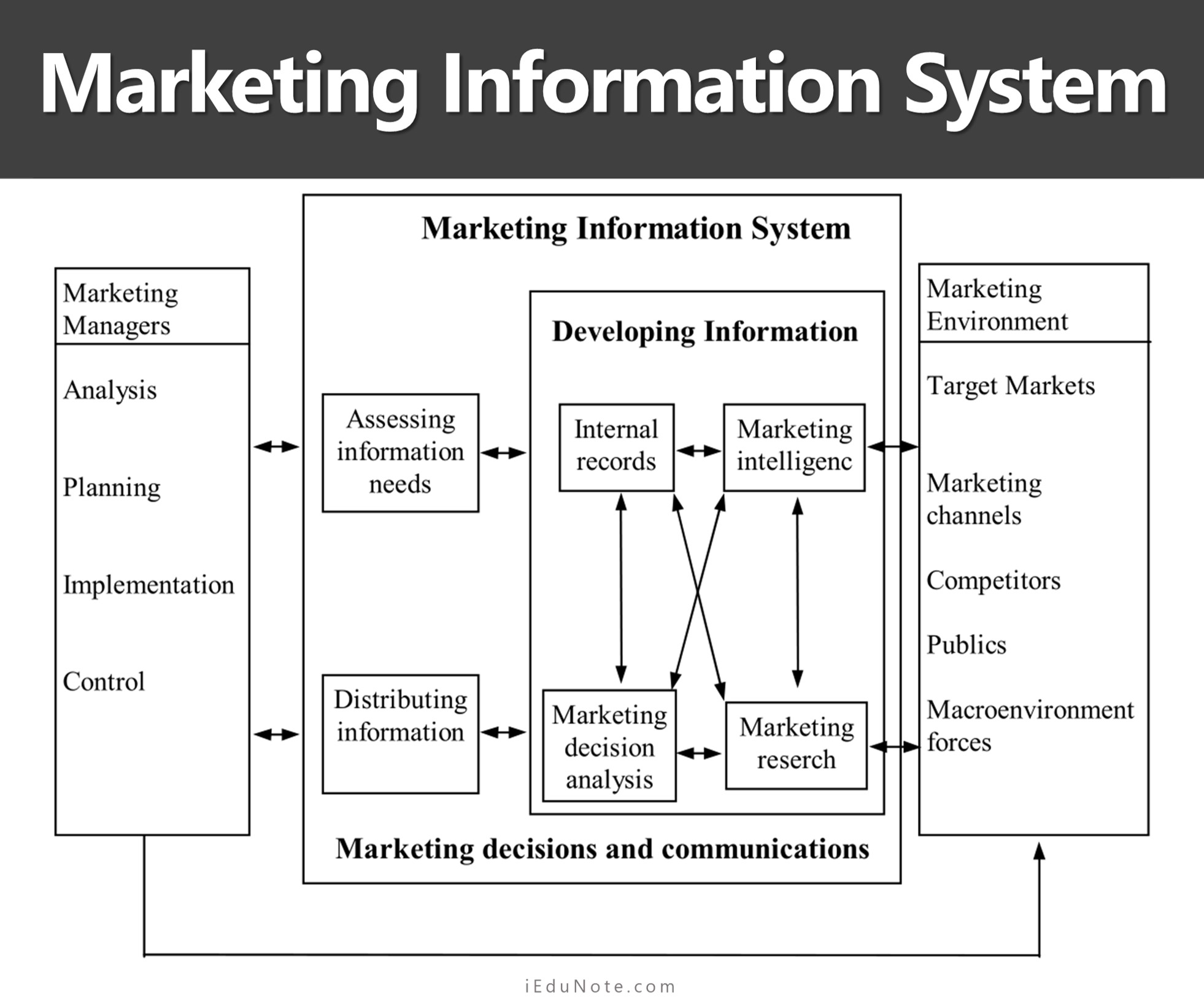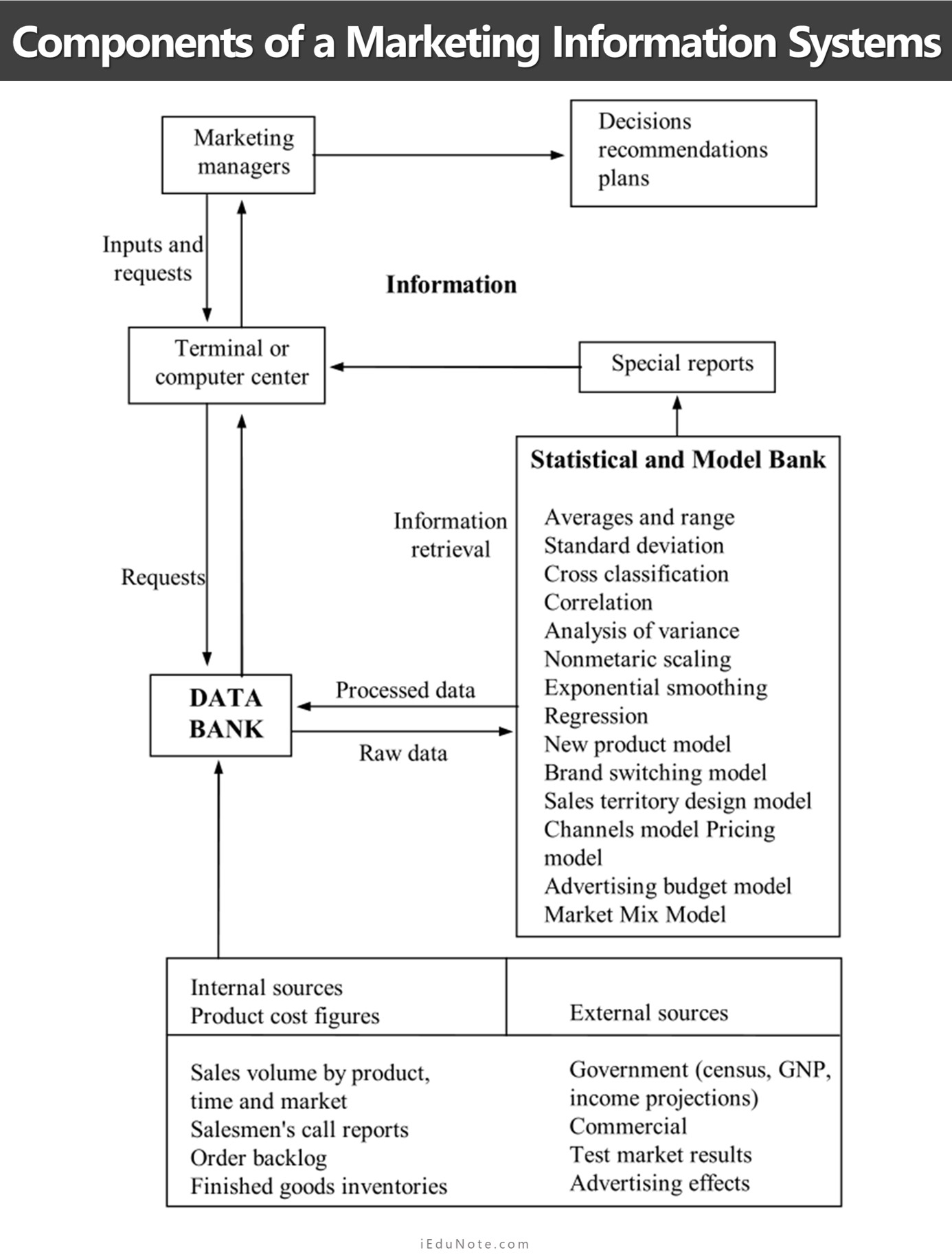As the need for information grew, so did the need for more sophisticated means of collecting and processing data. No longer is a random, haphazard accumulation of bits and pieces of data satisfactory. To fulfill this need, a Marketing Information System (MIS) emerged as a critical component of the marketing process.
Table of Contents
More broadly-based and complex than marketing research, an MIS better satisfies executives’ needs, informing them about the internal and market environments within which they operate.
As an MIS concept evolved, it has begun to replace marketing research as the overall data gathering process in the marketing environment.
Most experts agree that an information system – whether it be a marketing information system, an accounting information system, a financial information system, or some other – should include all data collection and processing facets. Within each information system, a variety of activities can take place.
MIS Definition and Meaning – What is a Marketing Information System?
A marketing information system consists of a structured, interacting complex of persons, machines, and procedures designed to generate an orderly flow of pertinent information, collected from both internal and external firm sources, for use as the basis for decision-making in specified responsibility areas of marketing management.
This suggests that marketing information systems are specially designed procedures for gathering and distributing data to managers.
A marketing information system can be defined as a process in which data from the market environment is collected systematically and comprehensively, evaluated in terms of its relevancy and accuracy, transformed to make it useful and usable by the managers, and conveniently stored or expeditiously transmitted to the managers.
Included in the MIS is a series of particular and important tasks. Unless each one is conducted properly, the system will not operate effectively and efficiently. Marketing Information Systems can be understood by looking at the following diagram developed by Dr. Kotler.

Tasks Performed by an MIS
Four tasks the MIS performs are;
- Data Collection
- Data Evaluation
- Data Transformation
- Data Transmission
Data Collection
The initial task in any MIS is a data-collection activity, which is not really a single action.
Rather, it comprises several processes, each designed to obtain particular data used for unique purposes.
The type and amount of data collected depend on how much is available and how much information executives want and are willing to pay for.
Data Evaluation
An MIS includes an activity to evaluate the relevance and accuracy of collected data.
Data are raw facts whose value to decision-makers is uncertain. On the other hand, the information comprises facts whose accuracy has been measured and is in a usable form and considered useful to decision-makers.
Data Transformation
Ideally, data coming into an MIS should be in a form that can be used immediately.
However, this seldom occurs. Some data must be analyzed through statistical testing; others have to be broken apart or combined somehow. Nearly all data will need to be condensed and placed in the formats the users’ desire.
Data Transmission
All the MIS operations are worthless if the information is not transmitted to the right people on time.
To ensure that information does not get lost, distorted, or unnecessarily delayed in transmission, a dissemination activity is required.
Information can be routed by intraoffice or intracompany mail, or different sophisticated electronic mediums can transmit it. If left to an informal process, the information will almost surely be lost or delayed.
Subsystems Constituting the MIS
A marketing information system includes four subsystems;
- the internal accounting system, which provides measures of current activity and performance;
- the marketing intelligence system, which gathers and makes available information on developments in the environment;
- the marketing research system, which gathers, evaluates, and reports the information required by executives for problem-solving, planning, and development of marketing strategies; and
- the marketing management science system or decision support system helps executives analyze complex marketing problems and operations, often through analytical models.
Components of a Marketing Information Systems
A marketing information system’s basic components are a data bank, analytical tools, and a communication network. The following diagram shows how managers interact with these components.

An MIS allows managers to retrieve selected historical figures from data files, process raw data with standard statistical programs, and test alternative strategies against complex planning models.
Managers may also call on MIS to generate various routine and special reports to help them in their day-to-day decision making.
MIS, thus, can be used for both planning and controlling the marketing programs.
Data banks draw most of their historical records from internal sales figures, call reports, and external materials published by research firms and governmental agencies.
The other type of data that may help managers is a record of past decisions and the assumptions used to make these decisions.
In building a data bank, a key factor is considered in determining the amount of detail or aggregation level that should be used.
After the needed data files have been accumulated, several analytical tools can be used to process and summarize.
Such statistical devices as programs for means, standard deviations, cross-tabulations, etc. are used to process, correlate, and summarize data.
Nowadays, managers often use computer models such as the simulation models to answer various “what if” type questions. This question usually arises when executives build marketing programs and attempt to solve problems after plans have been implemented.
Desirable Features of MIS
Besides, a good MIS system to have a computerized data bank should also be flexible to adapt to the special needs of the business environment.
It should be developed in such a way that it generates enough data relevant to a particular problem. But, care must be exercised not to load executives with an overabundance of irrelevant data.
There should be a built-in-system in an MIS to filter and condense data and assemble information to help managers reach accurate and timely decisions. It should also have safeguards so that the chances of erasing data and modifying programs are eliminated.
Moreover, the system should also have to use passwords to prevent unauthorized access to ensure data security and protect business interests.

